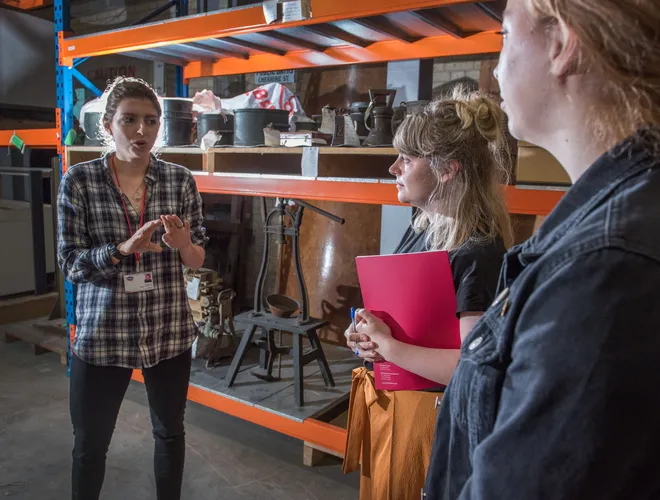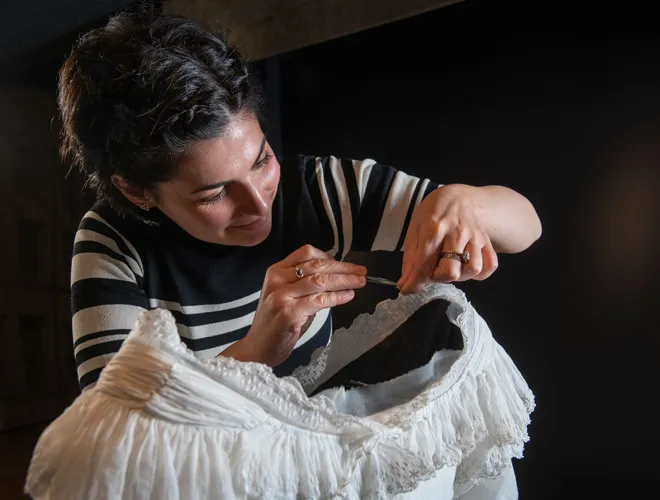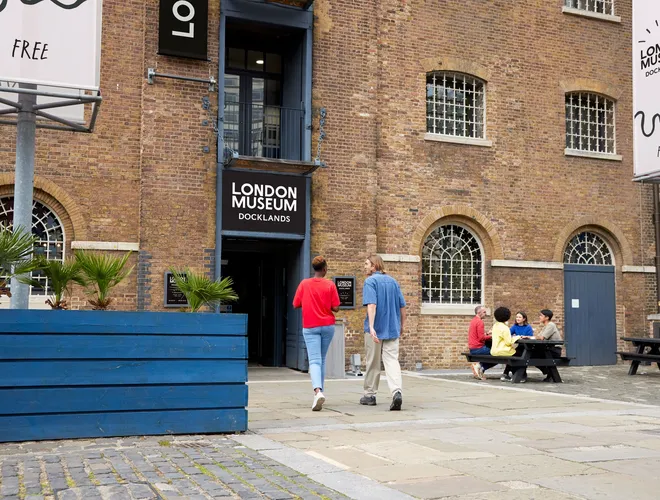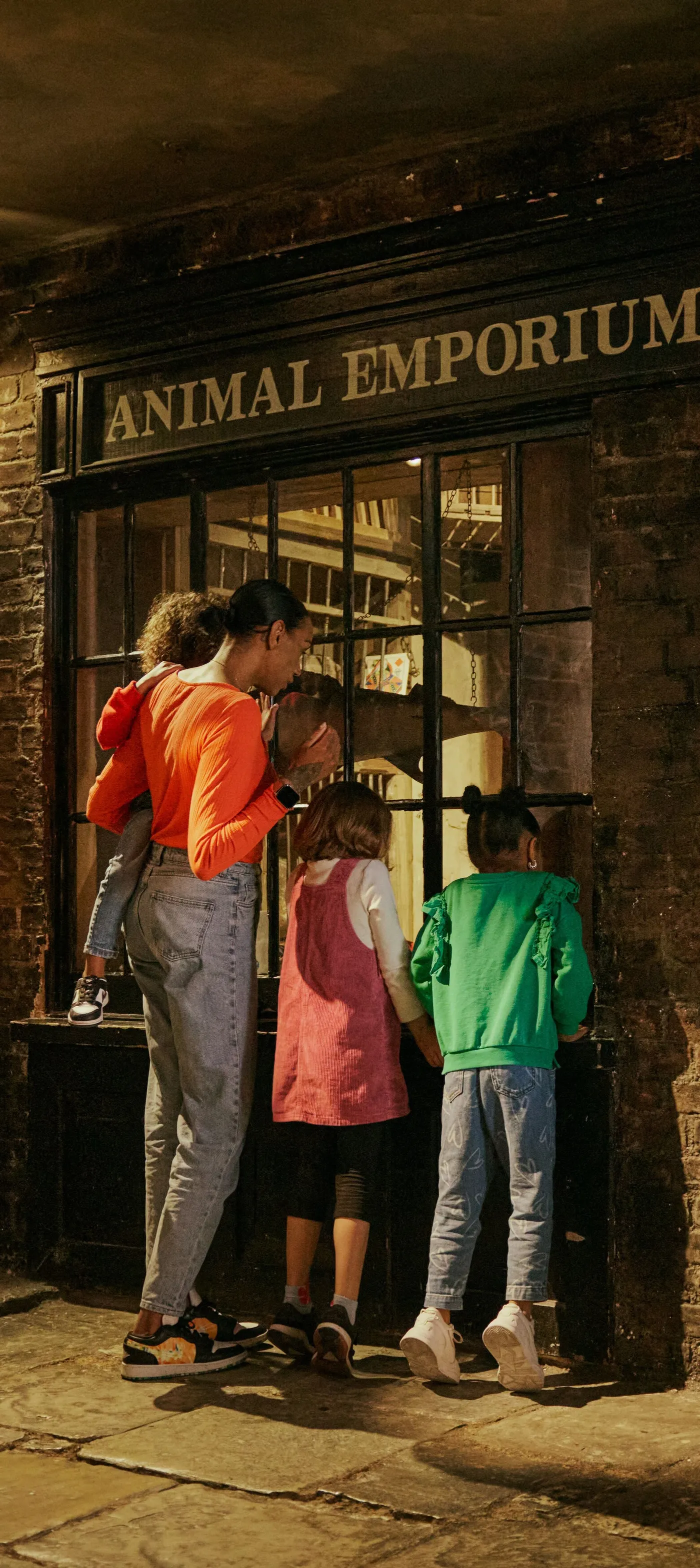Annual surveys
Giving a comprehensive understanding of the museum sector at both regional and national level, by highlighting trends and supporting benchmarking and advocacy.
The Annual Museums Survey provides vital insight into the health of museums across England.
Both Museum Development and Arts Council England use that data to inform their work and advocate for additional resources to meet the needs of museums.
The picture given of museums’ successes and challenges also provides an invaluable benchmarking resource for museums themselves.
2025 survey
This year's survey shows that London’s recovery from the Covid-19 crisis remains stronger than any other region in England. By last year, London was already the only region whose visitors had recovered to pre-Covid levels, and figures this year show an increase of 42% compared to 29% nationally. Numbers of schools engaged and onsite participation in education sessions also remains higher than nationally.
London continues to struggle with volunteer numbers. The median number of volunteers per museum has reduced from 30 last year to 20, compared with a national figure of 39. The 51% of London museums reporting new volunteers likely reflects the need to keep on recruiting to replace losses.
Rising costs continue and increases in expenditure outstrip the efforts the sector is making on income generation. A new question this year shines a light on local authority funding. Whilst 21% of London museums are wholly governed by a local authority, 35% are more broadly ‘reliant’ on local authority support. This highlights that in London as elsewhere, the museum sector is highly dependent on local authority support at a time when funding remains under extreme pressure.
In London, local authority museums have been stronger than independent museums in raising project grant income and making new staff hires, yet local authority museums feel less confident about the coming year than their independent counterparts.
Previous surveys
The survey this year shows London to be the first area achieving pre-pandemic levels of audience activity. Opening hours at non-national museums in the capital are back to 2019-20 levels and visitor numbers are now 2% higher, compared to 8% lower in the rest of the country.
However, as last year and in common with the rest of the country, rising staff, materials and energy costs mean that the financial recovery remains slow. While 58% of London museums reported an increase in income on 2023, 67% also reported an increase in expenditure.
There are spots of brighter news. Driven particularly by independent museums, volunteer numbers seem to have had a dramatic recovery. The correlates with other intelligence we are gathering, particularly a resurgence in the demand for training from volunteer managers.
The ratio of volunteers to paid staff in London increased over the year from 2:1 to 4:1 and the median number of volunteers per museum increased from 22 to 30. Although, with the number of volunteer hours contributed staying the same, it would seem this greater number of volunteers is contributing fewer hours each.
The post-pandemic digital momentum is still stronger in London’s museum sector than any other, with all digital audience engagement and e-commerce indicators still being higher across the board than any other region. Instagram has now overtaken X (formerly Twitter) as the social media platform most used by London museums.
The survey results show that post-pandemic recovery continues in London, with visitor numbers up 87% during 2022–2023 compared to 52% nationally. Visitor numbers are now just 11% short of pre-pandemic levels, compared to 18% nationally.
However, rising energy, materials and staff costs mean financial recovery remains slow. While 54% of London’s museums reported an increase in income on last year, 64% also reported an increase in expenditure.
The slow recovery in volunteer numbers is another cause for concern. Volunteer numbers are still 10% down on pre-pandemic levels compared to 5% nationally.
There are some spots of brighter news. The digital momentum brought about by lockdown is still strong in London, with digital audience engagement and e-commerce indicators being higher across the board in London than any other region.
There may be lots of reasons why, such as faster internet speeds, the higher proportion of large museums and possibly the dividends of our intensive digital skills programme.
The 2022 survey results show that museums in London continued to face significant challenges in their recovery from the pandemic. In 2021–2022, visitor numbers in London were still 51% down on the pre-pandemic levels of 2019–2020, compared to 45% nationally.
Moreover, some 12% of London museums did not re-open at all, a higher proportion than anywhere else in England. As elsewhere, many of those not re-opening were ‘micro’ museums, those who in normal times receive under 10,000 visitors per annum.
Overall, there was a very mixed post-pandemic picture, with larger museums recovering better. The one consistent and worrying message from the survey was the sustained damage to volunteer capacity, particularly in the capital.
The London report reveals the far reaching impact that the first year of the Covid-19 pandemic had on museums in the capital. In line with the national report, which shows the greatest impact to be on museums in urban areas, London was severely hit, given its reliance on tourism and public transport.
London museums’ 93% fall in visitor numbers was among the highest anywhere. With such a drop-off in demand, 45% of museums in London did not re-open at all during 2020-2021 and opening hours overall were less than any other region. Even where London museums did re-open, 91% reported occupancy to be below 40%, compared to 57% nationally.
The effect on museum finances was severe. Because of higher rateable values in the capital, fewer London museums met the eligibility conditions applying at that time to the local authority Covid grants. Despite other government financial support schemes, 78% of London museums reported a fall in income.
More on supporting museums
-

Grants & development
We have a range of intensive programmes and grants for museums
-

Training programmes
Our range of practical workshop and events on museum best practices
-

Support
How we can give your museum support, including accreditation advice
-

Museum networks
These museum networks give a platform for the exchange of skills and info between museums
-

News
The latest news from us and the wider museum sector
-

Contact the team
Get in touch with our Museum Development London team

